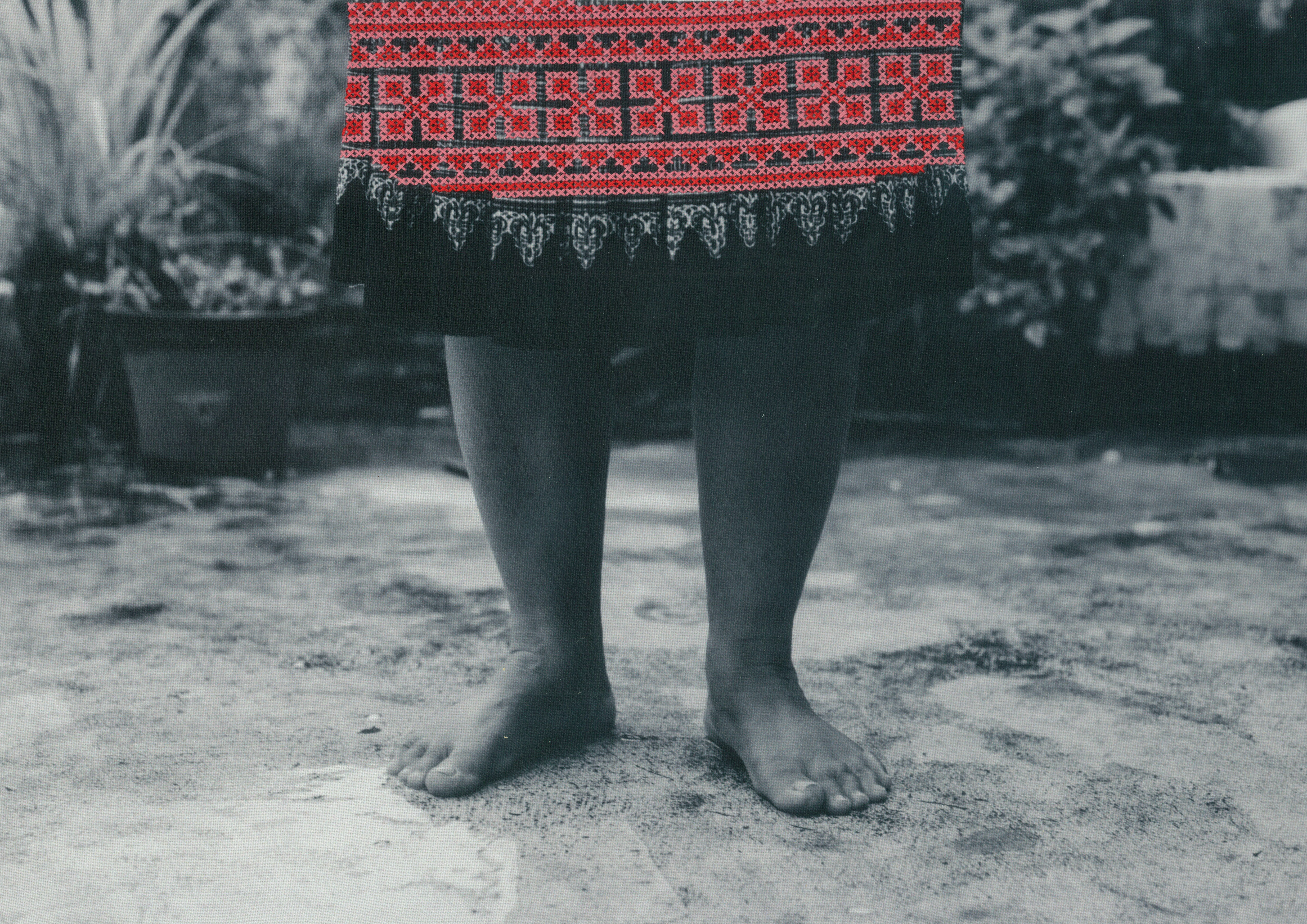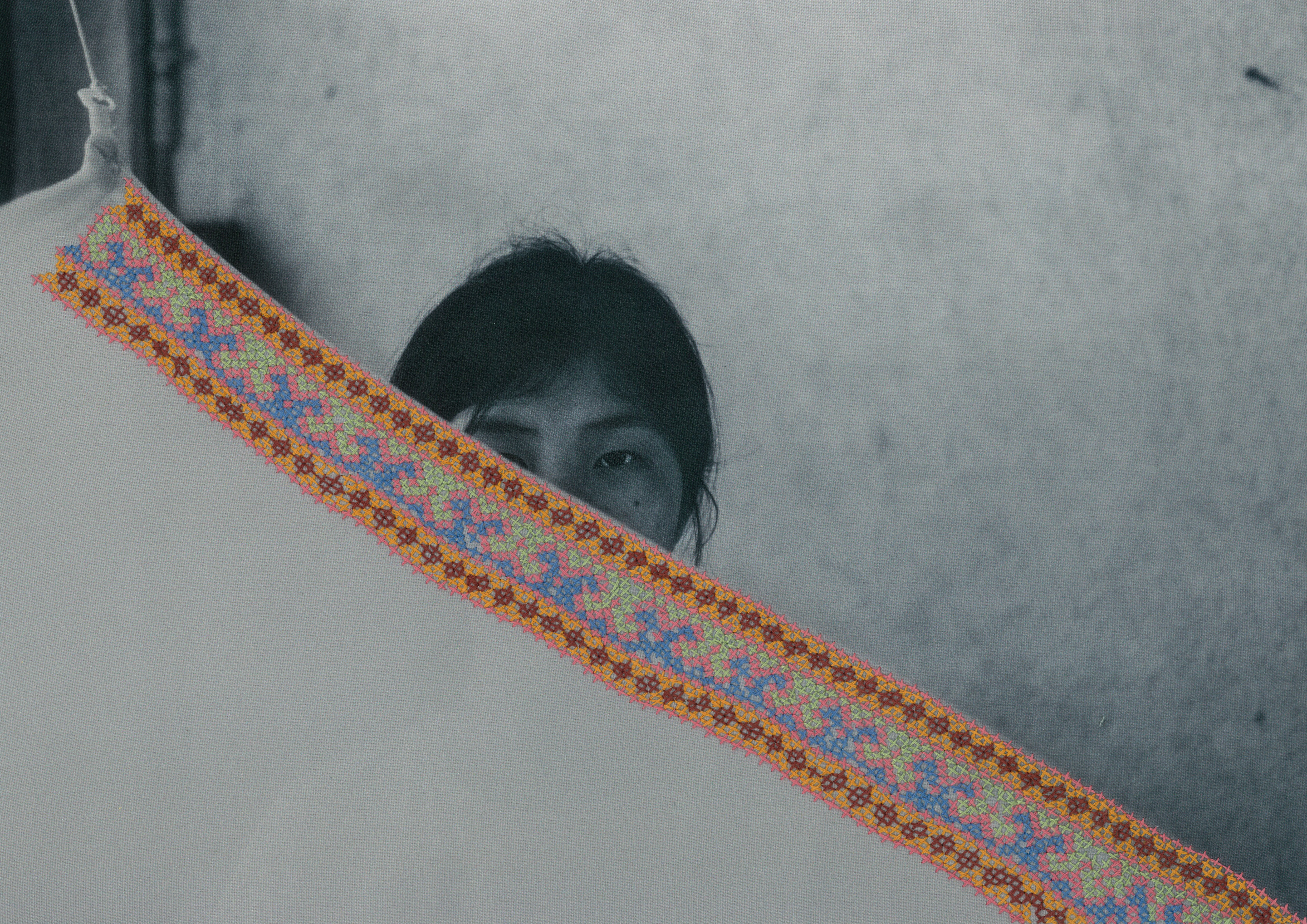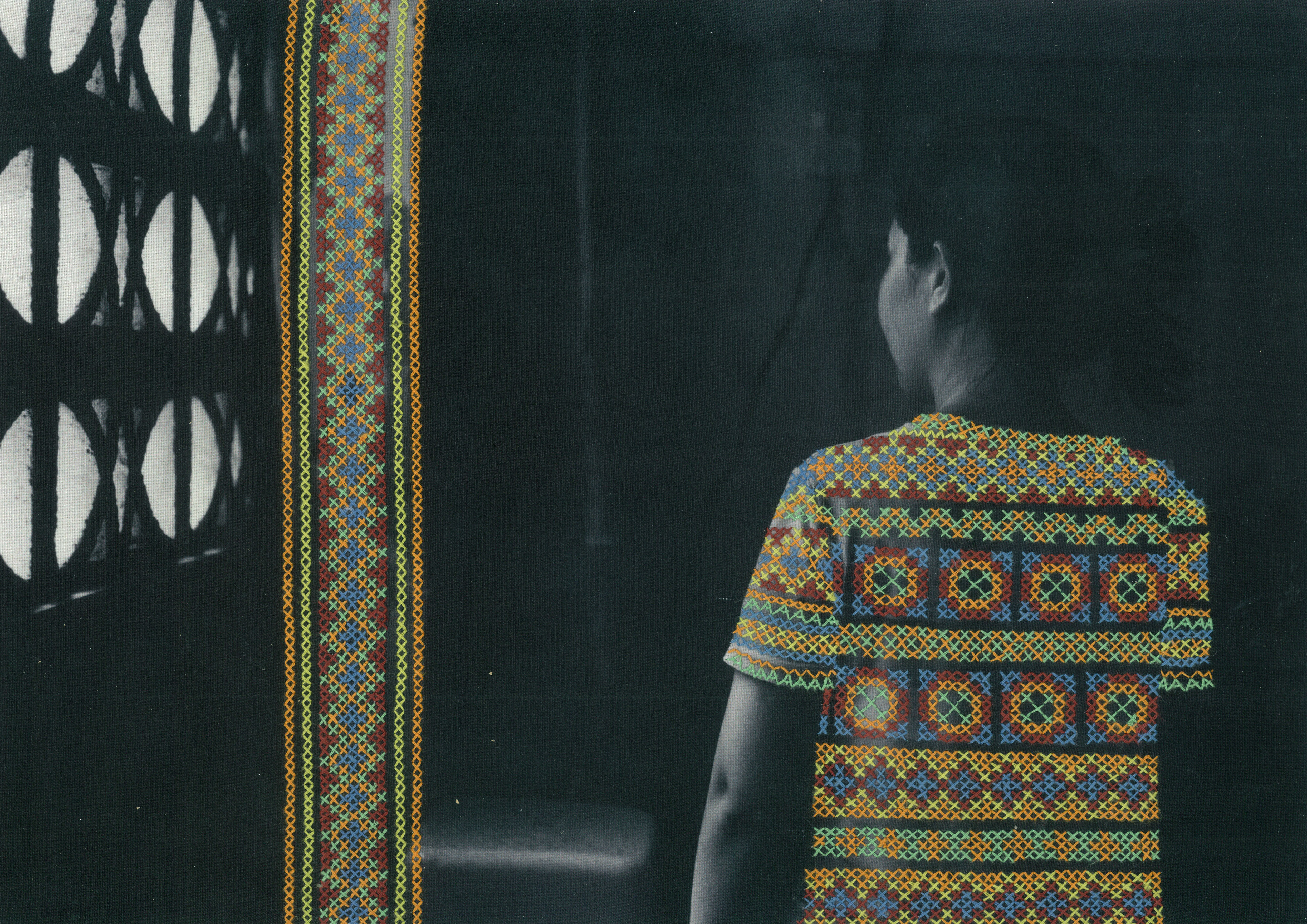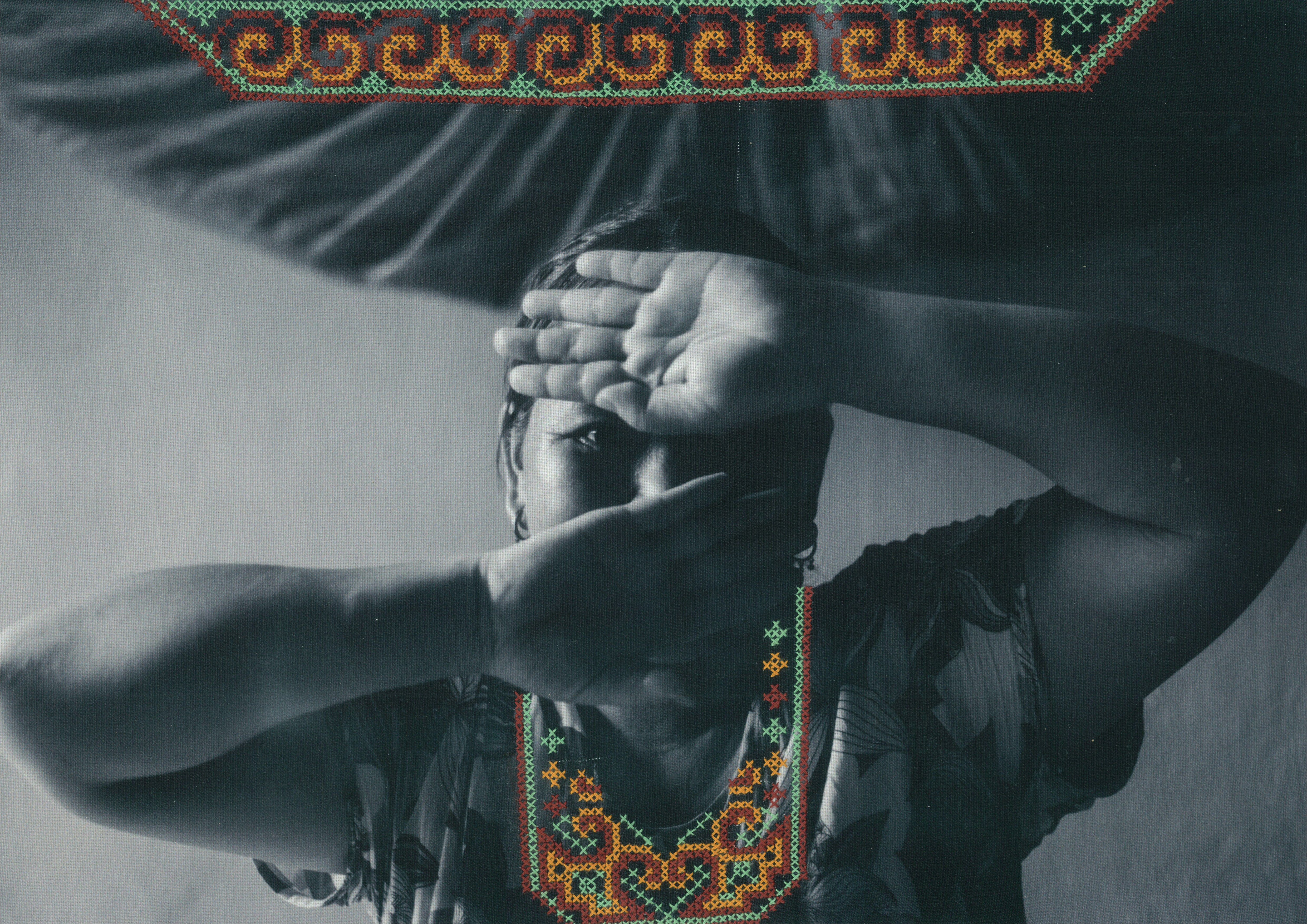© Ana Norman Bermúdez
Ana Norman Bermúdez incorporates Hmong embroidery into her portraits of the women, a collaboration championed by asylum NGOs
Eight years ago, a woman belonging to Vietnam’s Hmong population fled the country for Thailand after her family was attacked. She now resides in Bangkok, but still faces challenges in her adopted home. “It has been very difficult for me because I struggle to find enough work to support my six children,” the woman says. “Even when I find a job, the pay is very low because I do not have Thai nationality.”
Her testimony accompanies her portrait in Silent Threads, a project by Ana Norman Bermúdez which features 12 other Hmong refugees. As part of the work’s collaborative focus, Norman Bermúdez gave her portraits to the women and asked them to embroider the prints with traditional Paj Ntaub techniques. The artist had first met the Hmong women running a market stall selling such embroidery, and the idea started from there, allowing her subjects to protect their identities, showcase their skills and culture, and retain some agency over their depiction.


“I thought that giving them the chance to embroider over any parts of their image would be a good way for them to have the last say over how much is visible in the final portrait”
“Refugees rarely have any control over their representation in the media, and the way they are represented is often dehumanising – masses of desperate people pictured during the worst moments of their lives,” Norman Bermúdez says. “My main objective was to provide the women with an opportunity to control their own image and narrative. Hmong embroidery is a symbol of their cultural identity and a creative medium that they are highly skilled at using, so I thought that it would be the best way for them to contribute to our collaboration.”
Silent Threads was then displayed at two separate events hosted by Asylum Access, a non-profit organisation working in Malaysia, Mexico and Thailand to support people who have been forcibly displaced. One event was aimed at the general public, the other towards the refugee community. It went on to be featured on local TV, helping raise awareness and funding for the NGO’s work. “The project would not have been possible without the close relationship Asylum Access has built with the community of Hmong refugees,” Norman Bermúdez says. Representatives from the NGO helped translate as the artist went to each woman’s home, and her subjects were involved when making the portraits.

Norman Bermúdez was born in Spain but moved to the UK when she was 14 years old. She went on to study at London’s School of Oriental and African Studies, which taught her to look at international development from a critical, postcolonial viewpoint, she says. She became interested in how the media relates to social issues, particularly in south and south-east Asia and pursuing this interest, she took an MA in photojournalism and documentary photography at the University of the Arts London. Later she studied for an MSc in behaviour change, delving into how the media – particularly photography – influences people’s beliefs and attitudes. She moved to Thailand in 2017 to work for the UN Development Programme before going freelance in 2020.
Norman Bermúdez’s background and training give her work a humanitarian sensitivity; she was very conscious that her subjects might want to remain anonymous, as their refugee status is not legally recognised. “I thought that giving them the chance to embroider over any parts of their image would be a good way for them to have the last say over how much is visible in the final portrait,” she says. “One of the key themes that emerged during this collaboration was a tension between wanting to be seen and needing to stay hidden, which in many ways defines their experience as refugees.”

